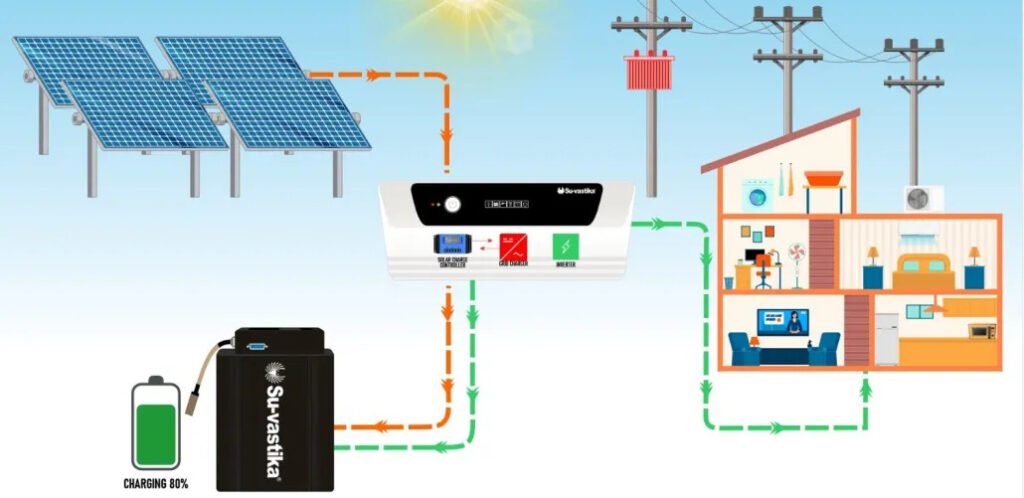
Off-Grid Solar Power System (Disconnected from the Grid)
The Off-Grid system is a completely independent solar power system that does not rely on the public electricity grid. It is designed to provide electricity in remote or isolated areas such as mountain villages, farms, cabins, or temporary work sites. This system stores energy in batteries for later use, ensuring power availability at all times.
How the System Works:
Solar Panels capture energy from the sun and convert it into electricity.
Charge Controller regulates the flow of energy to the batteries to protect them from damage.
Batteries store energy for nighttime use or when the sun is not available.
Inverter converts DC current to AC to power household devices.
Advantages:
Complete independence from the grid: Not affected by power outages.
Ideal solution for remote areas not connected to the electricity grid.
100% sustainable and clean energy.
Scalable based on needs.
Emergency safety with a reliable power source.
Disadvantages:
High cost: Batteries account for 30–50% of the total cost.
Ongoing battery maintenance: Especially in hot regions.
Requires precise design to meet daily needs and avoid power shortage.
Shorter battery lifespan compared to solar panels.
Realistic Data and Figures (Average Example):
| Item | Typical Value |
|---|---|
| System Capacity | 5 kW |
| Battery Capacity | 20–25 kWh |
| Approximate Daily Output | 20–25 kWh |
| Total System Cost | $6,000 – $10,000 |
| Battery Lifespan | 5 – 10 years |
| Battery Replacement Cost | $1,500 – $3,000 |
| Payback Period | 7 – 10 years |
| Overall System Efficiency | 70% – 80% |
Comparison: Off-Grid vs On-Grid
| Criteria | Off-Grid | On-Grid |
|---|---|---|
| Grid Connection | No | Yes |
| Battery Requirement | Yes | No |
| Cost | Higher | Lower |
| Operates During Power Outages | Yes | No |
| Best Use Case | Isolated areas | Cities and connected regions |
Summary:
The Off-Grid system is the most suitable solution for providing sustainable power in areas not served by the electricity grid. Despite its higher cost compared to the grid-tied system, it offers complete independence and is essential in remote locations. Accurate system design and high-quality components ensure maximum benefit and reduced malfunctions.
